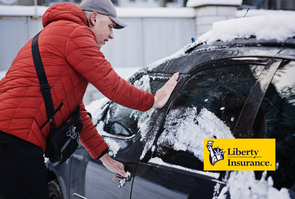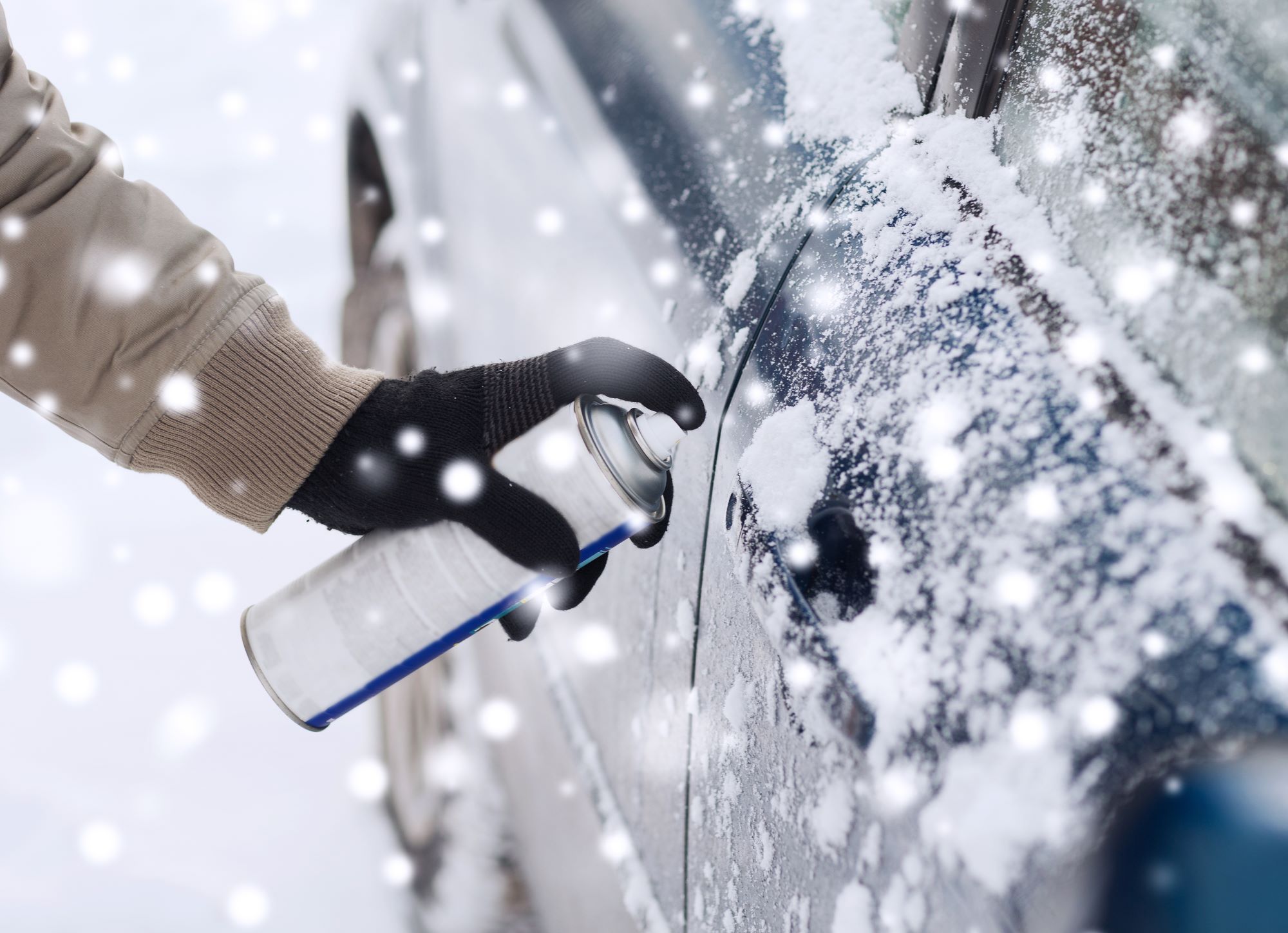
With the longer nights of winter often bringing with them plummeting temperatures, it’s not unusual to wake up and find your car is encrusted with a thick layer of ice, obliterating the view out of the windscreen and side windows, and thus making it undriveable. It could even also have thick snow sitting on it, making the clear-up operation even trickier. But here are our top tips, designed to help you safely defrost your car during the harshest winter weather.
Use a good quality, proper ice scraper
These do not cost a fortune and they’re properly developed to get ice from your windscreen and side windows safely, without damaging the glass. It might be tempting to try and use a credit card or similar thin item that comes to hand, but you’re going to do a much better job with a proper scraper. There are even ones which are built into a warming glove-type mitt, so your hands don’t become freezing cold while you’re working to clear the car.
Use de-icer as well
Sometimes, if the overnight frost is particularly heavy, the ice on your windscreen might be so thick that a scraper will struggle to remove it on its own. So invest in some de-icer too. This is a special liquid that works to melt the ice, primarily through the use of ethanol in its make-up, which has a much lower freezing point than water. De-icers do not cost much per can or bottle either, and they are safely formulated not to damage the exterior of the car (glass, rubber seals, paintwork and so on), but don’t be tempted to use them inside the vehicle – as the chemicals within could react with interior plastics in a different manner and cause damage.

Pan of water? Make sure it’s not too hot
If you don’t have a de-icer, many people use the ‘hot water’ trick to de-ice a car’s glass. But the key here is understanding that the water you use shouldn’t actually be hot, but rather lukewarm – and never, ever pour boiling or near-boiling water from a kettle onto the vehicle’s frozen glass. This is because if the water is too hot, it could cause thermal shock in the glass (i.e. the temperature difference between the glass and the water is too great) and cause it to shatter. Therefore, make sure the water you use is only lukewarm – it will still do the job of melting the ice rapidly.
And, when you pour water over the windscreen and rear windscreen, and the side windows too, make sure the car’s ignition is on. Clear both screens with the wipers once the ice is thoroughly defrosted, and also wind down all the side windows and wind them back up again shortly after pouring over the water. If you leave the water on the screens or side glass in a thick film, then if the outside temperature is still low (very likely after a night of heavy frost or snowfall) the water you pour over your car will quickly freeze up itself. You need to remove as much of it as you can while it’s still fluid.
Don’t use wipers on frosted-up glass
Linked to the point above, NEVER use your wipers on glass covered with ice or snow. For the former, dragging the cold rubber blades of the wipers over the harsh surface of the ice will simply damage your wiper blades and mean they’ll be less effective the next time it rains – so you’ll have to replace them. And if the car is covered in a thick layer of snow, then trying to lever great mounds of it off the windscreen with the wipers could cause even more damage, this time to the wiper motors – these will be far more expensive to replace than a set of wiper blades, if you burn the motors out trying to shift a lot of heavy snow with the wipers.
Don’t leave the car unattended and idling
It’s tempting to simply turn the car on ten minutes before you leave, put the heater blower on maximum and directed at the windscreen, and then turn on the heated rear screen function (and the front screen, if you’ve got it), then head back into the warm of your house for a cuppa while you wait for the car’s interior climate functions to do the hard defrosting work for you. However, not only is this environmentally responsible – especially if you leave a petrol or diesel car running unnecessarily – it could also completely invalidate your insurance. This is because car thieves are aware of people idling the vehicle to defrost it on cold mornings, and if you leave it unlocked with the engine running and the keys in it, you are simply inviting an opportunist thief to drive it away while you’re inside. And if someone does steal your car in this way, your insurance company will cite that you lacked a ‘duty of care’ to prevent the vehicle being stolen and may not pay out in the event you attempt to make a claim.
If you do want to defrost it with the car’s engine, then aside from the needless exhaust emissions (if you’re in a petrol or diesel car) that’s fine – but wear a big thick coat, a woolly hat and some gloves, because you’ll need to sit in the vehicle for the entire duration of the defrosting process. People who own electric vehicles (EVs) have an advantage here, as many of them come with a pre-conditioning function which means you can switch on the interior climate control with a smartphone app, and the car will pre-warm itself long before you need to get in and drive it. Its electric drive motors won’t be active, nor will the cabin be unlocked, so it will be perfectly secure while it defrosts.
Prevention is better than cure
If you can afford it, there are relatively inexpensive blankets that you can buy which sit on the glasshouse of the car overnight. These prevent frost from settling during cold nights, so that all you need to do is remove the blankets in the morning to be ready to drive away. Cardboard also works, if you have any available, but the key here will be how you secure it in place – certainly, you can tuck the cardboard under the wipers on the front and rear screens, but fixing it to the side windows will be another matter. Better to invest in the proper fitted blankets, for that reason.
No portholing
You might have partially cleared some of your windscreen and a bit of a side window or two, and think you’ve got enough visibility to get going while the rest of the glass on the car clears as you drive along. But this is called portholing and it’s not safe. You need full visibility out of all windows of the car (including rear side and the rear windscreen) before setting off on your journey, so don’t be tempted to cut corners with the defrosting process – leave enough time to ensure the car’s glasshouse is completely clear before you even begin driving.
Clear snow from roof and bonnets
If it has snowed during the night and your car is left looking like a giant Christmas cake, it is again tempting to just clear the glasshouse of snow (and any ice lying underneath it), and then head off. Don’t, because, as you drive, the snow could move during heavy braking and acceleration, or going round corners, and either slip down from the roof onto your windscreen – suddenly obscuring your view – or fall onto the road and cause problems for other drivers and road users. You therefore must clear all the snow off your car’s flat surfaces before you set off.
Make sure your lights and number plates are clear
Connected to this, if your vehicle’s head- and taillights are all iced up or are blanketed in a thick layer of snow, you have to clear those off so other road users can see them if required. Similarly, the number plates must be clear, and the authorities will take a dim view of someone who has clearly defrosted a car in all the key places, but has left the number plates obscured by snow or ice. Make sure your plates are clearly visible to avoid an awkward roadside stop and, potentially, a fine too.
To learn more about different types of Car Insurance options available from Liberty Insurance - CLICK HERE
Carzone - 11-Dec-2023



